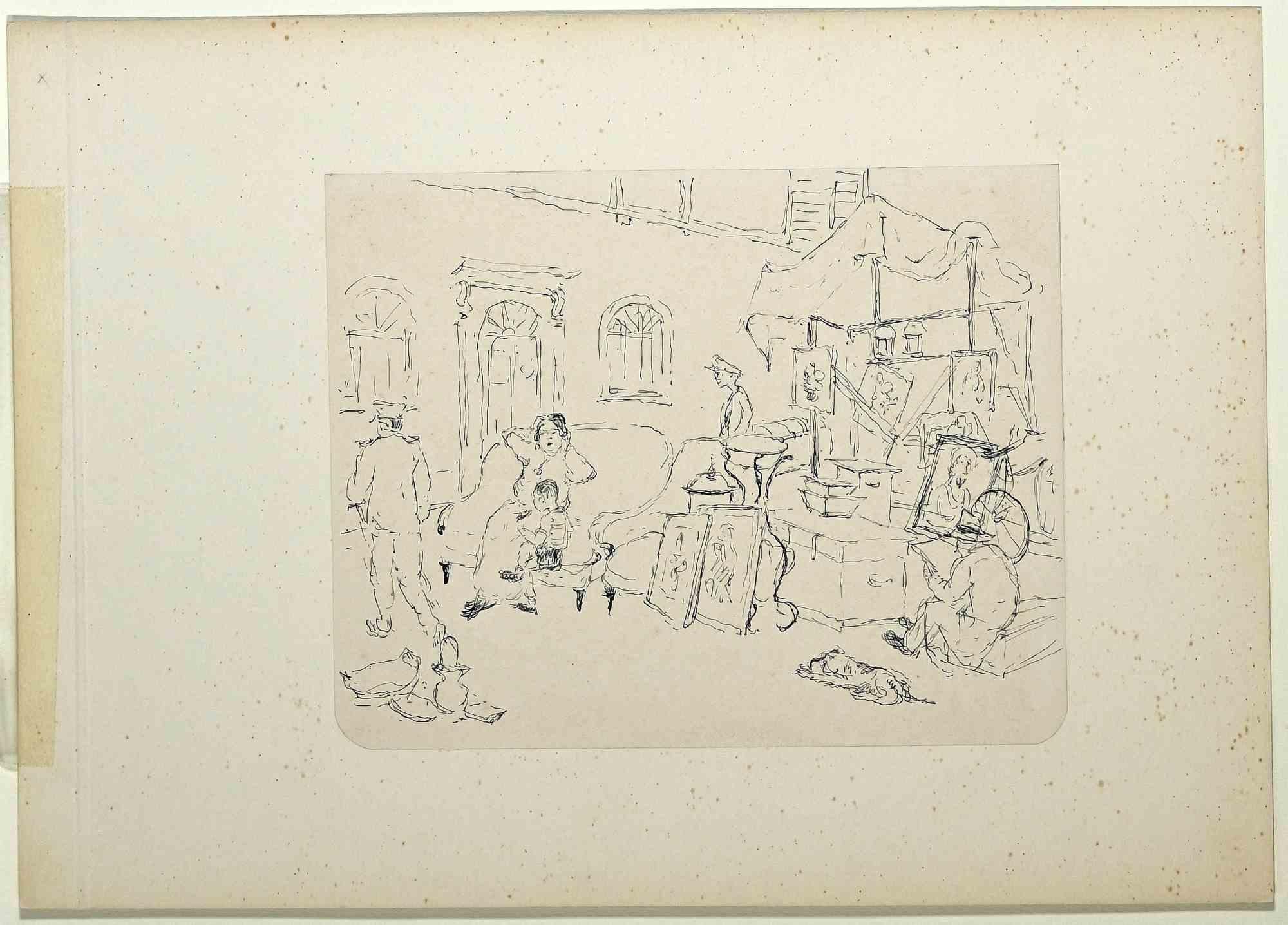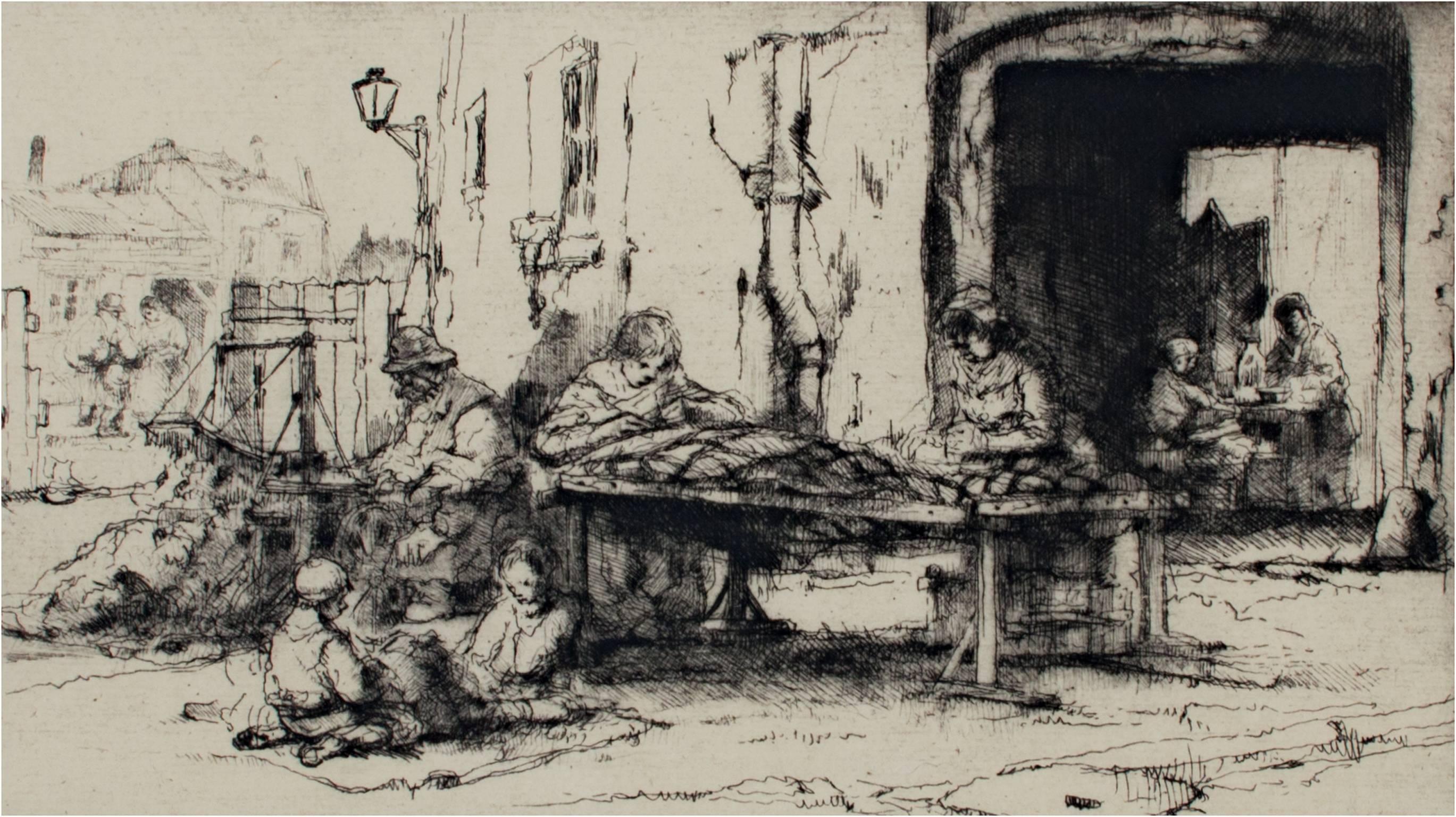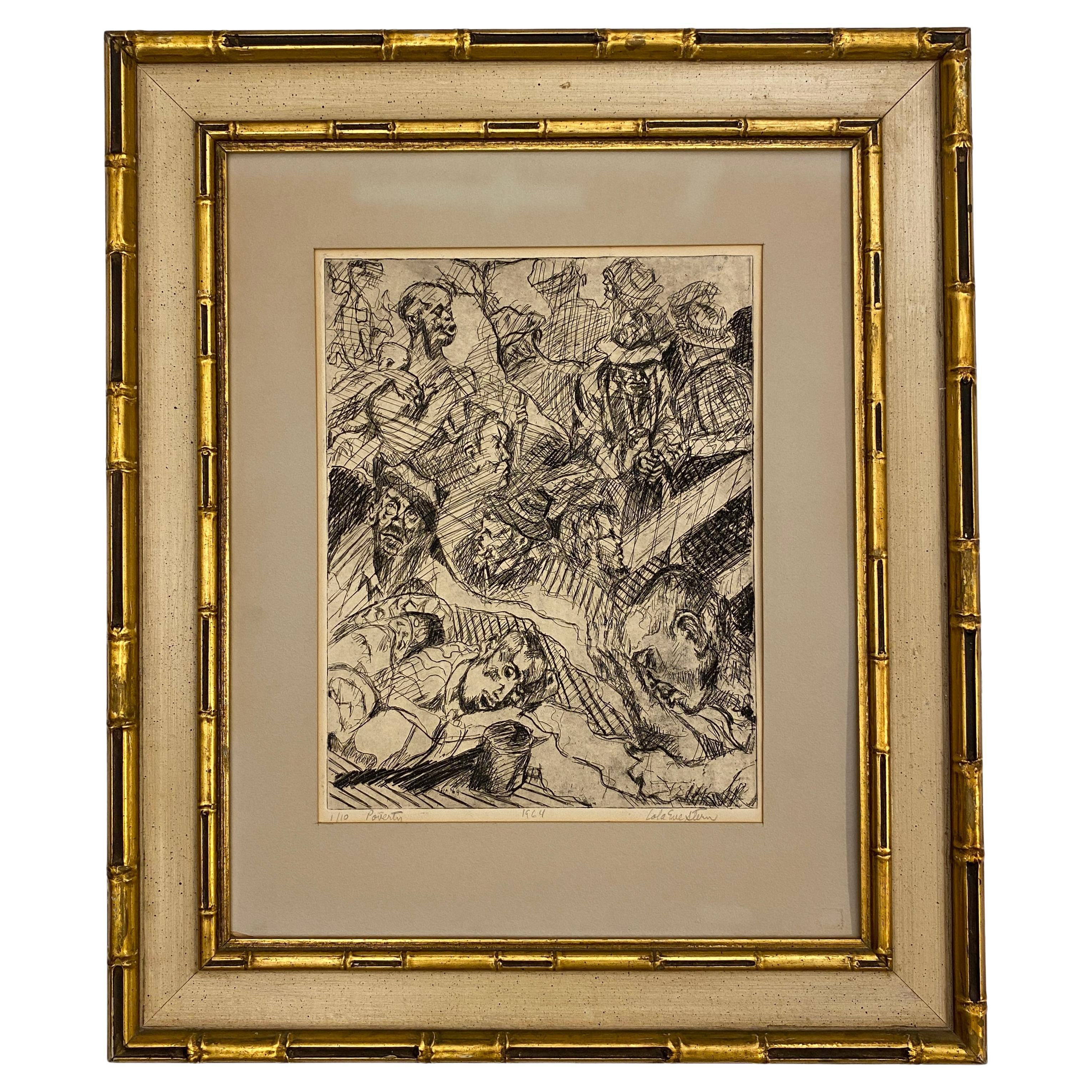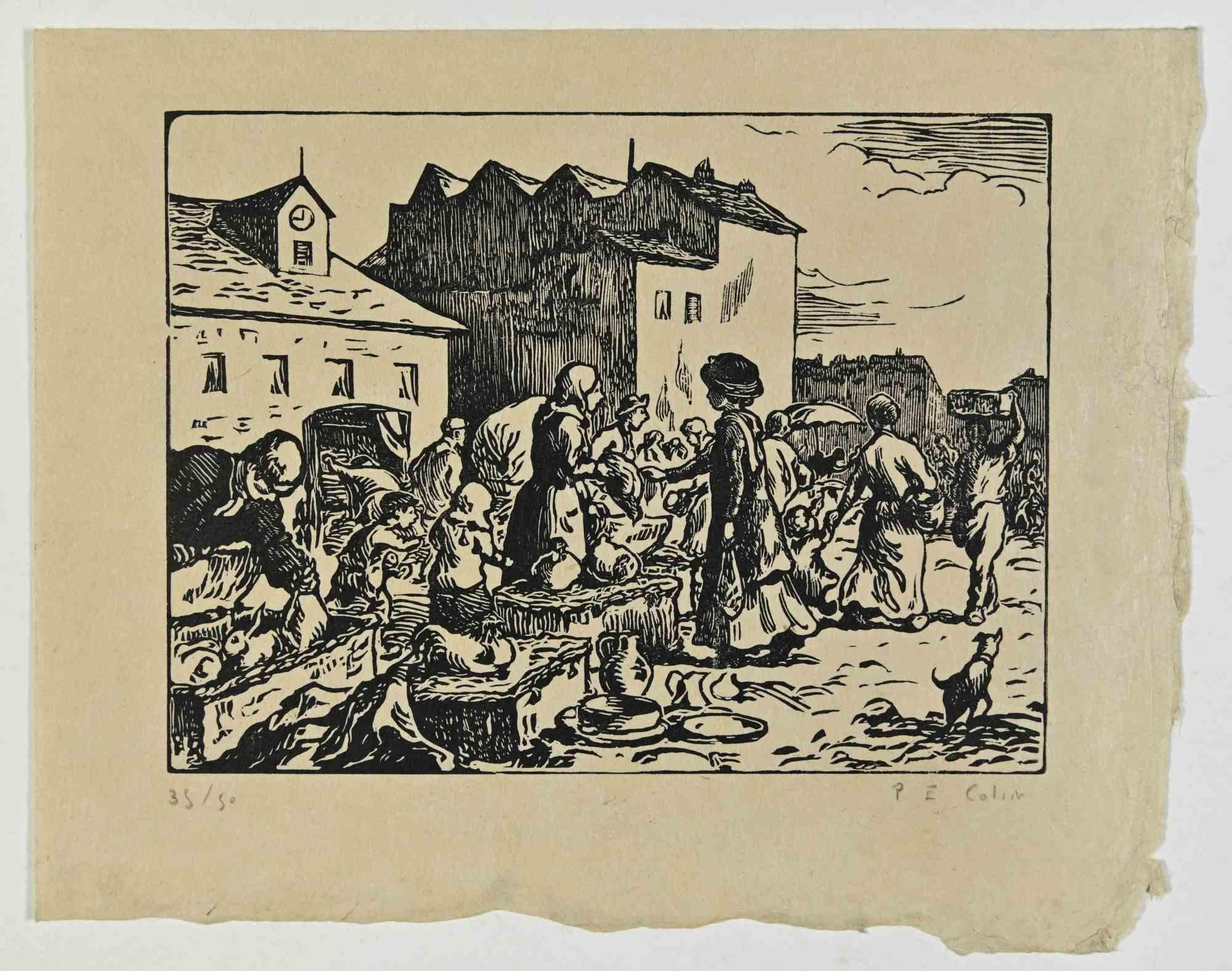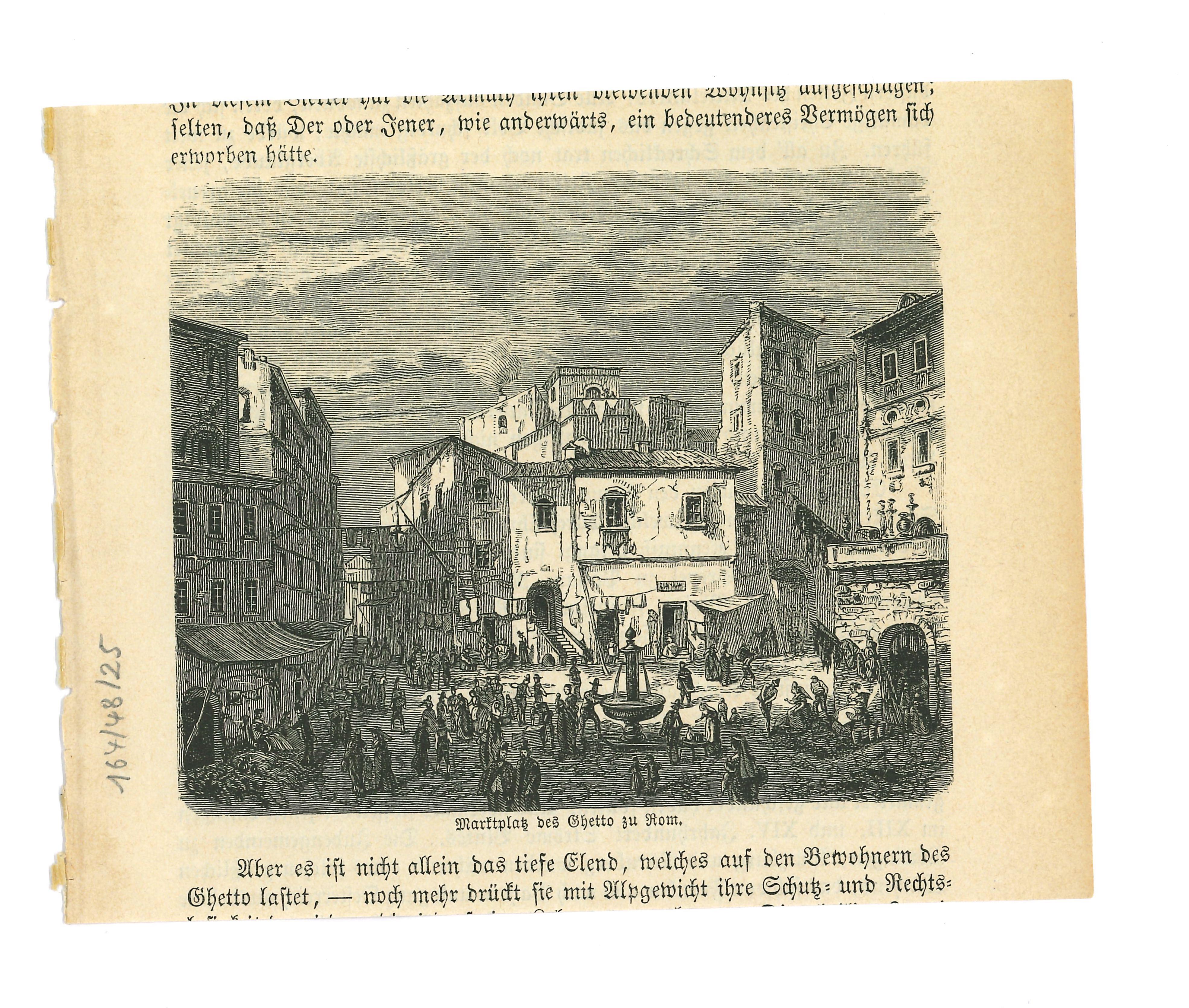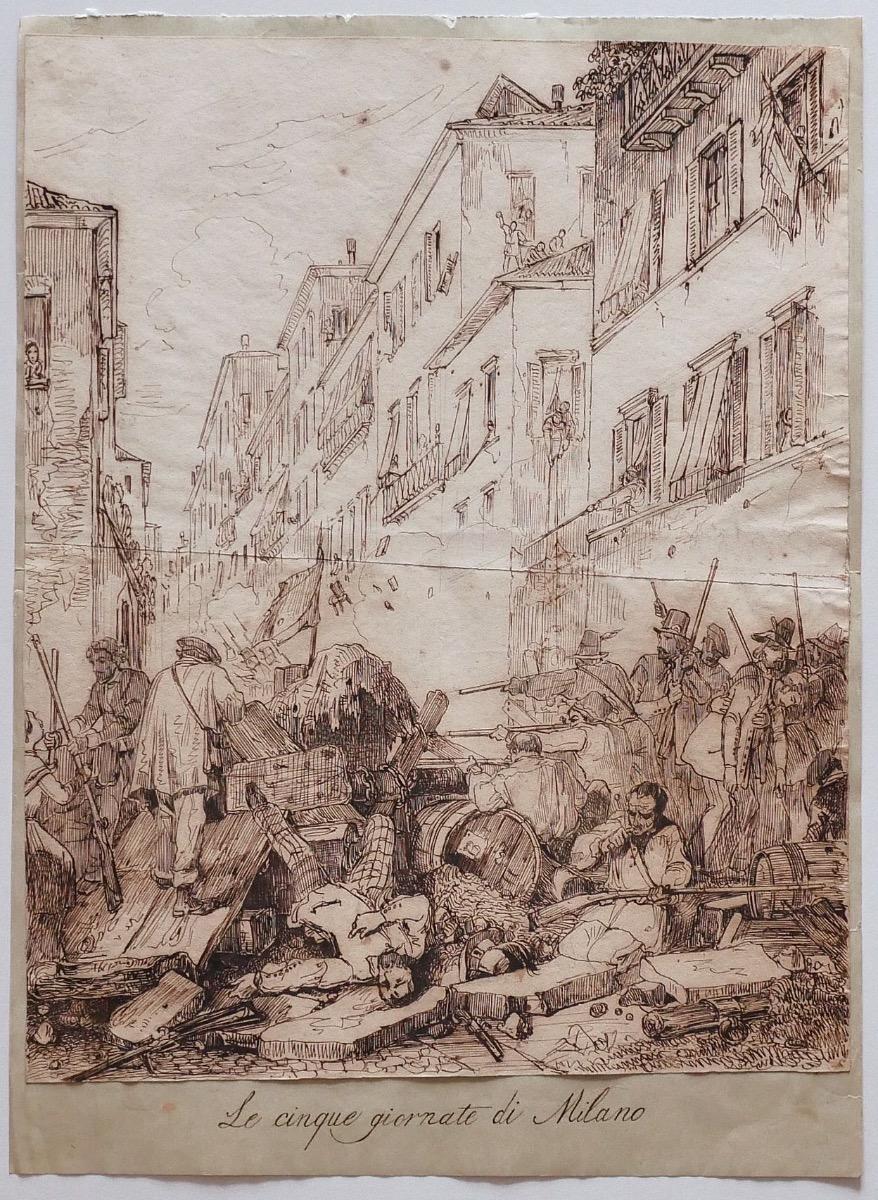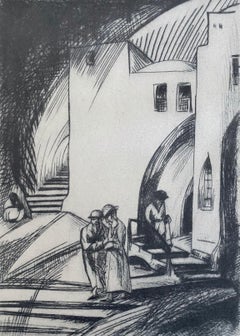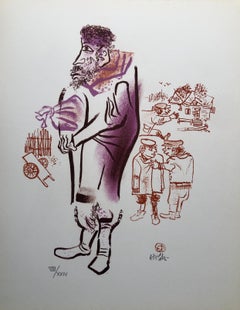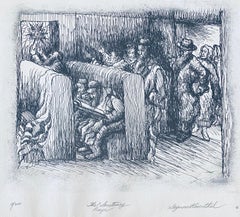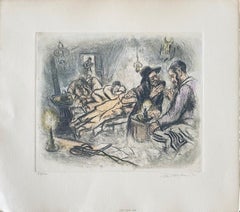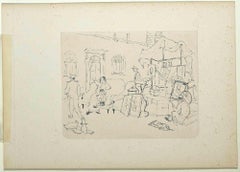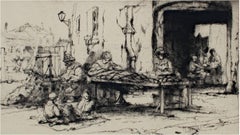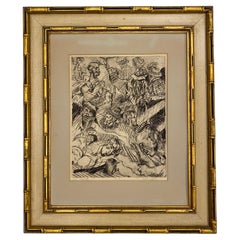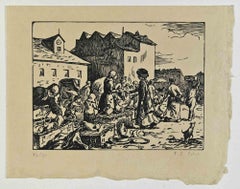Items Similar to Plunder at the Jewish Ghetto, Chalk and Charcoal 'Progrom' Drawing
Want more images or videos?
Request additional images or videos from the seller
1 of 8
Victor E. PenneyPlunder at the Jewish Ghetto, Chalk and Charcoal 'Progrom' Drawing1973
1973
$375
£284.87
€328.13
CA$536.48
A$588.37
CHF 303.45
MX$7,028.59
NOK 3,848.64
SEK 3,610.46
DKK 2,451.37
About the Item
Chalk and charcoal drawing, depicting old world progrom, "Plunder at the Jewish Ghetto, Jews of Frankfurt are attacked in the 16th century."
- Creator:Victor E. Penney (British)
- Creation Year:1973
- Dimensions:Height: 13.75 in (34.93 cm)Width: 14.75 in (37.47 cm)
- Medium:
- Movement & Style:
- Period:
- Condition:Measurements include frame.
- Gallery Location:Surfside, FL
- Reference Number:1stDibs: LU38211541402
About the Seller
4.9
Platinum Seller
Premium sellers with a 4.7+ rating and 24-hour response times
Established in 1995
1stDibs seller since 2014
1,819 sales on 1stDibs
Typical response time: 1 hour
- ShippingRetrieving quote...Shipping from: Surfside, FL
- Return Policy
Authenticity Guarantee
In the unlikely event there’s an issue with an item’s authenticity, contact us within 1 year for a full refund. DetailsMoney-Back Guarantee
If your item is not as described, is damaged in transit, or does not arrive, contact us within 7 days for a full refund. Details24-Hour Cancellation
You have a 24-hour grace period in which to reconsider your purchase, with no questions asked.Vetted Professional Sellers
Our world-class sellers must adhere to strict standards for service and quality, maintaining the integrity of our listings.Price-Match Guarantee
If you find that a seller listed the same item for a lower price elsewhere, we’ll match it.Trusted Global Delivery
Our best-in-class carrier network provides specialized shipping options worldwide, including custom delivery.More From This Seller
View AllBezalel School Jerusalem Israeli Judaica Etching - Street
By Isaac Lichtenstein 1
Located in Surfside, FL
YITSKHOK LIKHTENSHTEYN (ISAAC LICHTENSTEIN) (1888-1981) (Icchok, Izrael) was born in Lodz, Poland. Initially he was studying at Yehuda Pen school in Witebsk. In the same school wh...
Category
Early 20th Century Post-Impressionist Drawings and Watercolor Paintings
Materials
Etching
Jewish Shtetl Peddlar Americana Judaica Lithograph WPA Yiddish Social Realist
By William Gropper
Located in Surfside, FL
Hand signed in pencil and numbered with Roman numerals 8/24. A very small edition.
Old Lower East Side of New York or East European Shtetl. Jewish Shtetl Peddler Merchant. humorous ...
Category
Mid-20th Century Modern Figurative Prints
Materials
Lithograph
American Artist Judaic Lithograph Synagogue Scene
By Seymour Rosenthal
Located in Surfside, FL
Seymour Joseph Rosenthal was born and raised in the Bronx part of New York City in 1921 and was a child of the “Great Depression”. He was a self taught artist who started drawing at ...
Category
Mid-20th Century Prints and Multiples
Materials
Lithograph
Judaica interior scene etching with hand coloring
By Ira Moskowitz
Located in Surfside, FL
Etching with extensive hand coloring (making it a unique original work of art)
Ira Moskowitz (1912-2001), descendant of a long rabbinical line, was born in Galicia Poland and went w...
Category
20th Century Post-Impressionist Interior Prints
Materials
Etching
1940's American WPA Modernist New York City Watercolor Painting Tenement Market
By Samuel Grunvald
Located in Surfside, FL
The Market, (fauvist painting of NYC scene) 1940's.
image is 10X 11.5 inches. Hand signed lower right
Lower East Side Tenements Pushcart Market
Samuel Grunvald was a Hungarian born American WPA artist known for abstract, landscape and seascape paintings.
Arrived in the USA from Hungary in 1921 and settled in New York City where he studied at the Art Students League. Grunvald worked for the Federal Art Project, taught at Colony House in NYC. Member: Art Guild, Watercolor Society, New York Watercolor Club. exhibited at Montross Gallery, NYC, World House Galleries, NYC, Leonard Hutton Gallery, NYC, Associated American Artists Gallery and the A.C.A. Gallery. Gunvald's work spanned many modern American movements from the WPA to Abstract Expressionist painting. He was a member of the American Watercolor Society and the Brooklyn Society of Artists. He exhibited with both of these organizations and at the Brooklyn Museum of Art. He was involved the the WPA being a Federal Arts Project artist. A number of prominent Jewish artists participated in this New Deal program among them Ben Shahn, Joseph Solman, William Gropper, Philip Guston Adolph Gottlieb, Mark Rothko, Milton Avery, Ben Shahn, the Soyers (Isaac, Moses, and Raphael), and many others
Grunwald exhibited alongside other popular artists such as Paul Klee, Jean Arp, Max Ernst and Charles Burchfield. He also taught and lectured on art and easel painting, Federal Art Project, NYC. His work is included in the collections of the Museum of Modern Art and The Jewish Museum, New York. Americana.
Select Exhibitions
A.C.A. Gallery
Associated American Artists Gallery, 1936-1955
American Watercolor Society, 1932-1942
New York Watercolor Club, 1935-1937
Humanist Art...
Category
1940s Modern Figurative Drawings and Watercolors
Materials
Watercolor
Jewish Peddlers on Market Day Modernist Judaica OIl Painting Cubist Abstraction
By Samuel Sigaloff
Located in Surfside, FL
Sam Sigaloff (1895-1987) signed in the lower right. Vibrant market scene oil on canvas.
Category
20th Century Figurative Paintings
Materials
Canvas, Oil
You May Also Like
A Market - Drawing by Katerina Wilczynski - 1953 ca
Located in Roma, IT
China ink drawing on paper.
Not signed.
Good condition except for some foxing.
Category
1950s Modern Figurative Drawings and Watercolors
Materials
Ink, Paper
20th century etching figurative urban scene sketch black and white signed
By Auguste Brouet
Located in Milwaukee, WI
"Les Matelassiers (The Mattress Makers)" is an original etching by Auguste Brouet. It depicts people creating a mattress outside. The artist signed the...
Category
1910s Modern Figurative Prints
Materials
Etching
Lola Eve Stern Contemporary Black and White Lithograph Titled "Poverty"
Located in Miami, FL
Contemporary Black and White Lithograph by Lola Eve Stern titled 'Poverty'. This intriguing piece of art depicts men in pleading or distressed poses.
Pencil signed by the artist, t...
Category
Mid-20th Century American Mid-Century Modern Prints
Materials
Wood, Paper
Market - Etching by Paul Emile Colin - Mid-20th Century
Located in Roma, IT
Market is a Woodcut realized by Paul Emile Colin in the Mid-20th Century.
hand-signed.
Numbered.Edition, 35/50.
Good conditions with slight foxing.
The artwork is realized throug...
Category
Mid-20th Century Modern Figurative Prints
Materials
Etching
Ancient View of the Ghetto in Rome - Original Lithograph on Paper - 19th Century
Located in Roma, IT
Ancient View of the Ghetto in Rome is an original modern artwork realized in the first half of the 19th Century.
Original Lithograph on paper.
Inscripted on the lower margin.
Fai...
Category
Mid-19th Century Modern Figurative Prints
Materials
Paper, Lithograph
Five Days in Milan - Ink Drawing on Paper - 19th Century
Located in Roma, IT
Five Days in Milan (Le Cinque Giornate di Milano) is an original drawing in brown ink on paper realized by an anonymous artist in the 19th Century.
In good conditions, with a light fold in the center.
Titled in Italian on the lower center.
The artwork represents an impressive scenery from the real historical event Five days ("Le Cinque Giornate di Milano", March 18-22, 1848) of intense street fighting...
Category
19th Century Modern Figurative Drawings and Watercolors
Materials
Ink
More Ways To Browse
Jewish Paintings
Woman Lying Down
1930s Pencil Drawings
1930 Social Realism
Chalk On Black Paper
Pencil Drawings Paris
A Werner Painting
Chinese Woman Painting
Galerie May
Old Master Pencil Drawing
Orientalist Drawing
Paris Ink Drawings
Pencil 18th
1919 Charcoal
1970s Pen Drawings
Vintage Car Drawing
Original Charcoal Drawings Framed
20th Century Charcoal Sketch
